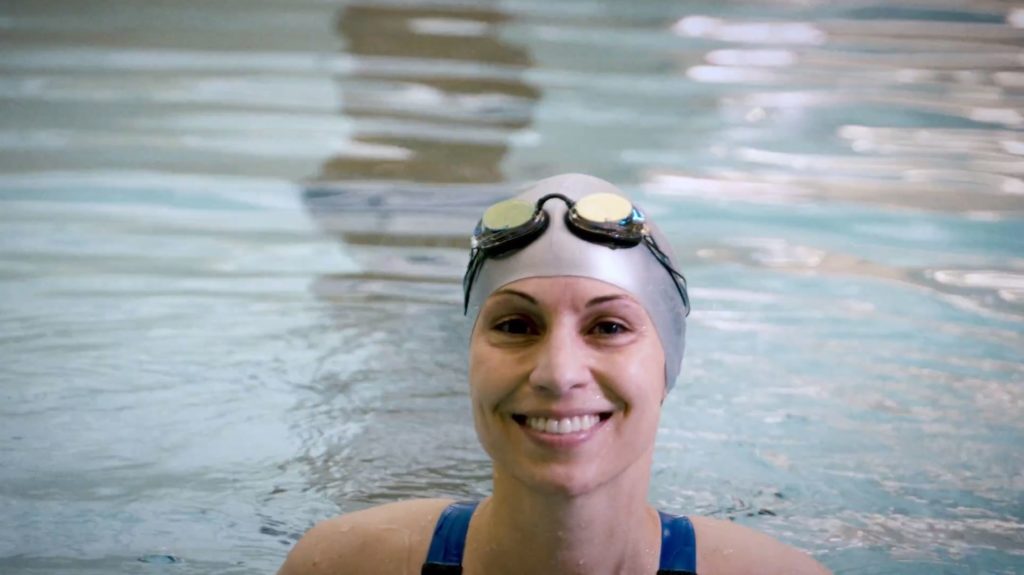
Stephanie Fabrizio
Stephanie was enjoying her usual workout – swimming a mile at the local aquatics center – when her arm grew unusually heavy. Eventually, she could hardly complete her stroke. She knew something was wrong, but her doctors couldn’t identify the problem. So, they turned to innovative medical technology.
A Swimmer’s Soul
For Stephanie, swimming was more than a hobby: it was a way of life.
“I began swimming when I was very young, probably around the age of 5 or 6, and I started swim team around the age of 7,” said Stephanie. “It’s been something I’ve been passionate about my entire life.”
So when one day, her stroke became more and more difficult, she was concerned.
“I had noticed some difficulty swimming,” Stephanie said. “My arm had become heavy and the stroke alone was becoming more and more difficult.”
It wasn’t until the next morning when she knew something was terribly wrong.
Fear and Comfort Collide
“On the morning of January 11, I woke up, and my arm had turned completely purple, and it was heavy,” Stephanie said. “I was scared.”
Stephanie checked into the emergency room the same day. Her health care team struggled to make a diagnosis. Eventually, thanks to innovative diagnostic imaging technology, doctors discovered the source of the problem.
“I actually had not one, but two blood clots in both of my subclavian veins,” Stephanie said. “I was told I would need surgery.”
As Stephanie prepared for surgery, she grew more and more fearful.
“It was very scary,” she said. “I didn’t know what it would mean for me long term.”
Stephanie was not only worried about enduring major surgery and recovery; she was also worried that her surgery might mean an altered lifestyle. Stephanie was worried she might not swim again.
“When I thought I may not be able to swim again, it was devastating,” she said. “It was something I couldn’t picture my life without.”
Stephanie took her concerns to her doctor. Her doctor responded with medtech.
A Solution in Innovation
“I went to the hospital on May 12, and I felt confident in the doctor, and I felt confident that he would be using [an innovative medical technology],” said Stephanie.
The doctor would remove Stephanie’s first rib, and he would use video-assisted surgery technology called a laparoscope to aid in visualization, since the distance from the incision to the surgical site was relatively far. Stephanie’s surgery went smoothly, and she was back in the pool within a few months.
“The good news is, I’m back to swimming,” Stephanie said. “I will never forget the doctor saying to me, ‘Get back to your life, do what you love to do. Get back to swimming. Things are going to work out.’”
Learn more about innovative visualization and mapping technologies.